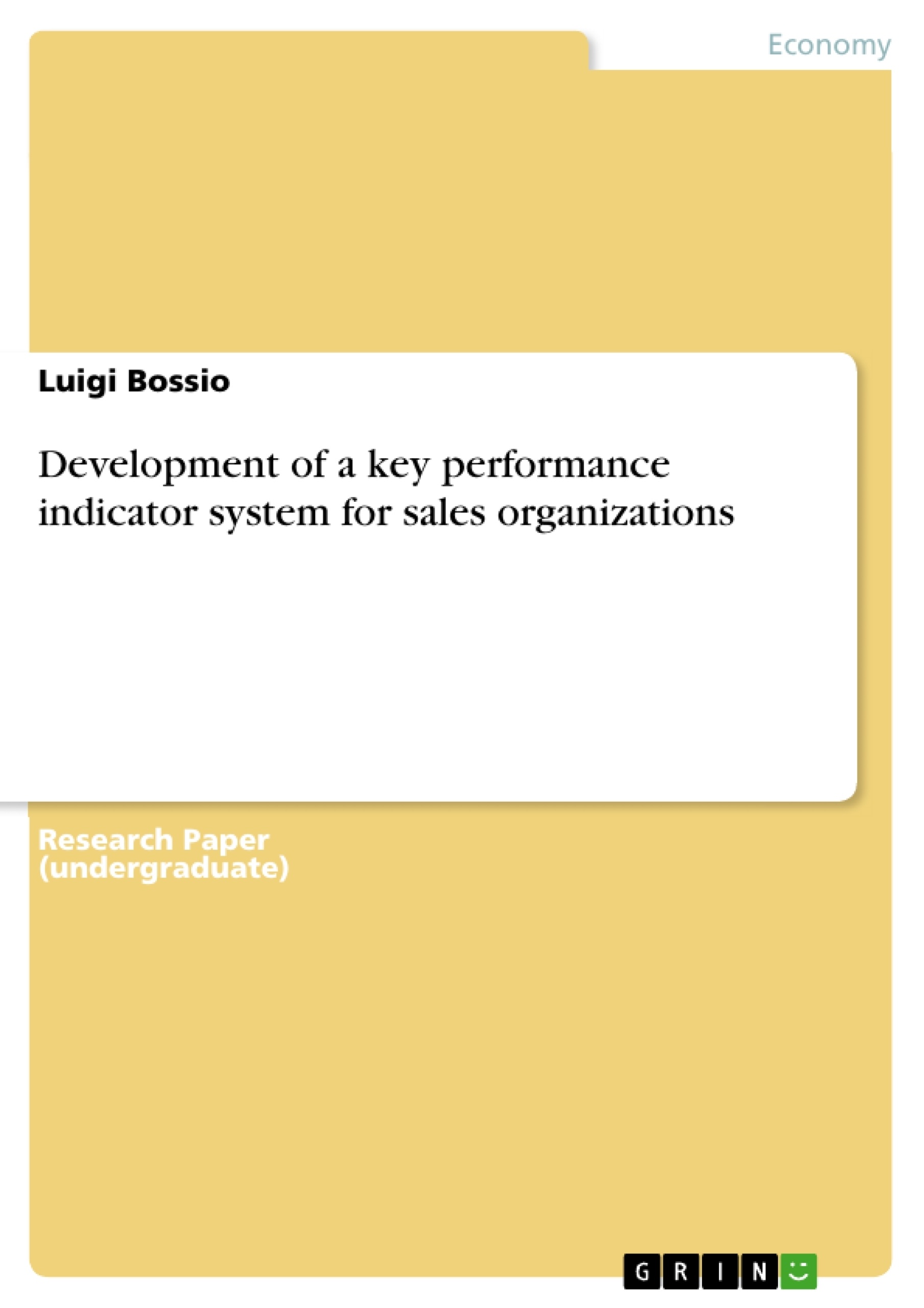For every sales organization it is important to understand how their business is running in order to manage it. The management needs significant data in order to pursue their targets and take the right decisions. Appropriate controlling methods in order to better understand running businesses are the issues of KPIs and KPI systems. The thesis picks up the issue of KPI systems in order to develop a KPI system which is tailored on the economic reality by illustrating basic comprehension about KPI systems as well as by introducing a sales-related KPI system.
Table of Contents
- 1. Introduction
- 2. Key performance indicator system as a management tool
- 2.1 Meaning and targets of a KPI system
- 2.2 The essential component of key figures
- 2.2.1 Forms and tasks of key figures
- 2.2.2 Quality criteria for measurement parameter
- 2.2.3 Multidimensionality of measures
- 2.3 Development of key performance indicator systems
- 2.4 Integration of benchmarking
- 3. Key performance indicator system for sales organizations of an industrial company
- 3.1 Determination of targets
- 3.2 Financial key performance indicators
- 3.3 Modular sales controlling
- 3.3.1 Internal analysis
- 3.3.2 External analysis
- 3.4 Cause-effect chains within the system
Objectives and Key Themes
This work aims to develop a comprehensive key performance indicator (KPI) system specifically designed for sales organizations within an industrial company. The primary objective is to provide a framework for measuring and improving sales performance, ultimately leading to enhanced efficiency and profitability.
- Developing a KPI system as a management tool for sales organizations
- Identifying key figures and their application in measuring sales performance
- Integrating benchmarking practices into the KPI system development
- Analyzing and incorporating financial KPIs specific to sales organizations
- Exploring the modular sales controlling approach and its application in the KPI system
Chapter Summaries
- Chapter 1 provides an introduction to the concept of key performance indicators and their significance in managing sales organizations. It outlines the objectives and scope of the work.
- Chapter 2 delves into the theoretical foundation of KPI systems, explaining their meaning, targets, and essential components. It discusses various key figures, their forms, tasks, quality criteria, and multidimensionality. The chapter also addresses the development of KPI systems and the integration of benchmarking practices.
- Chapter 3 focuses on the practical application of KPI systems in the context of sales organizations within an industrial company. It explores the determination of targets, financial KPIs, and modular sales controlling as a framework for analyzing both internal and external influences.
Keywords
Key performance indicators, sales organizations, management tool, key figures, benchmarking, financial KPIs, modular sales controlling, internal analysis, external analysis, cause-effect chains, industrial company, efficiency, profitability.
- Quote paper
- Luigi Bossio (Author), 2013, Development of a key performance indicator system for sales organizations, Munich, GRIN Verlag, https://www.grin.com/document/214465



